Banana is a great first finger food for babies because of its soft texture and easy-to-grip shape. Here is everything you need to know about safely serving banana for baby led weaning.
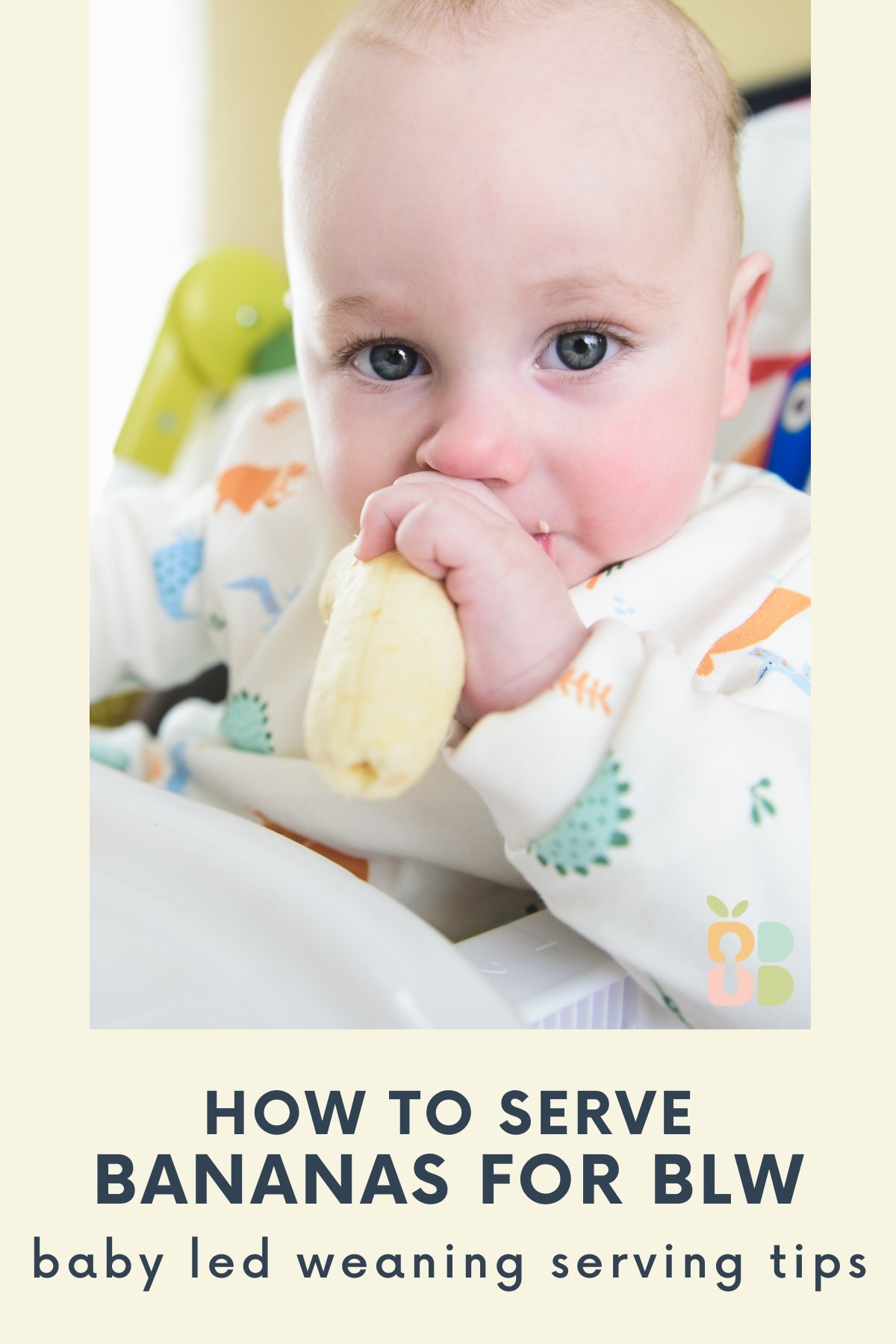
Bananas are a common first food, and are enjoyed by kids of all ages. They're also a favorite of parents because they are so easy to serve to little ones! Here is everything you need to know about serving this nutritious fruit to baby led weaning babies or those in the finger food stage.
Jump to:
When Can Babies Eat Bananas?
Babies can eat bananas as soon as they are developmentally ready for solids, around 6 months of age. There are ways to offer banana to babies, but avoid offering banana sliced into round coin shapes to prevent choking. Keep reading for other easy serving options!
Health Benefits of Bananas for Babies
Bananas are great sources of carbohydrates for energy, as well as:
- Fiber
- Vitamin C
- Folate
- Potassium
- Antioxidants
Together, these nutrients support digestion and gut health, growth and development, healthy blood pressure, iron absorption, and neutralization of free radicals.
Less ripe bananas (more green) are higher in a fiber called resistant starch, which acts as a prebiotic in the gut. This is good for the gut, but can also cause discomfort or constipation if your little one eats too much, especially when first starting solids. As bananas ripen, the resistant starch decreases and natural sugar increases, which could have the opposite effect.
How To Serve Banana for Baby Led Weaning
Bananas are great for baby led weaning because they require little preparation on your part, and they are naturally a great texture and easy shape for gripping! (Just be sure you're not serving firm green bananas - they should be ripe enough to be soft.) There are a few options for serving bananas to BLW babies. For younger babies without a pincer grasp, stick with longer pieces so that baby can pick them up more easily. Once a pincer grasp is developed, usually around 9-11 months, you can offer bite-sized pieces.

1. Halved, with the peel (6+ months)
Because bananas can be slippery, many parents will offer a banana cut into half crosswise with some peel left on the majority of the bottom so that baby can easily pick it up. This is not my personal favorite, since it still leaves the banana in a round shape, and requires a little more finesse with a knife to cut the peel while leaving the banana intact. But it is an option!
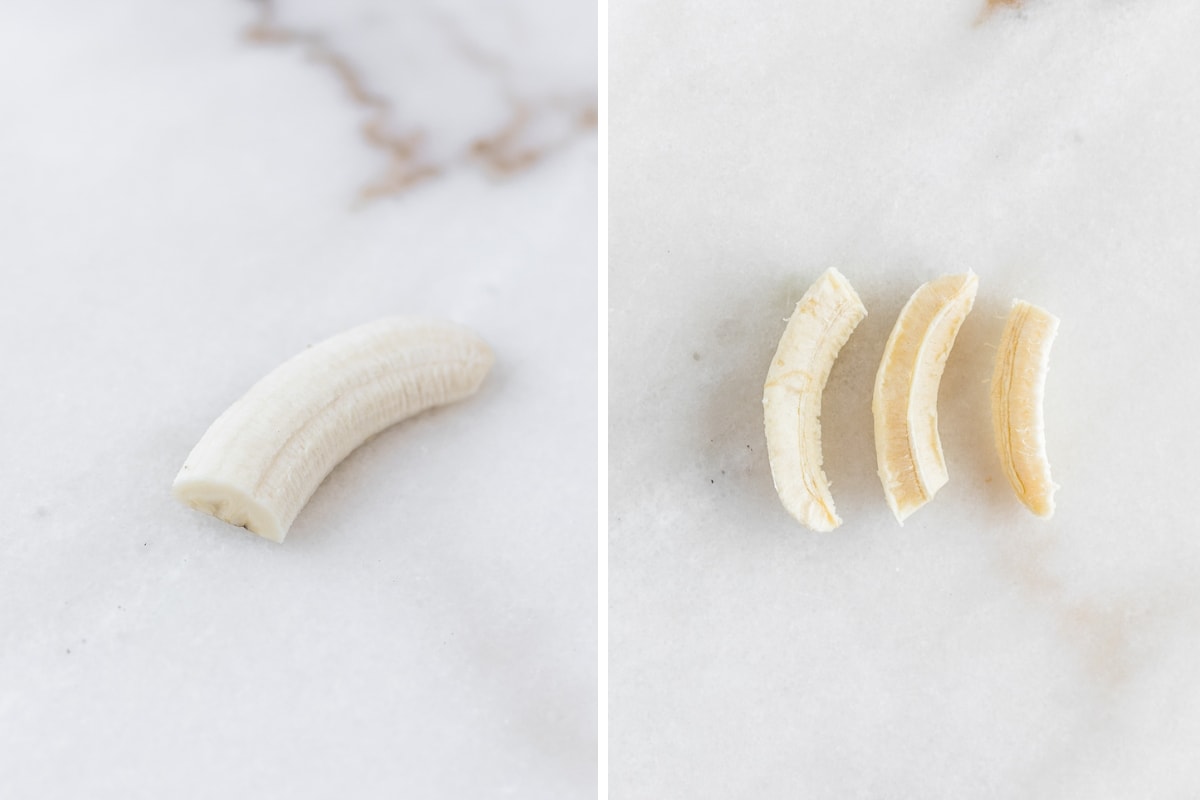
2. Quarters or spears (6+ months)
Cut a banana in half crosswise and then lengthwise so you have a long quarter. Or cut the banana in half crosswise and separate along the natural lines down the middle into spears. These pieces should be large enough for baby to pick up while also eliminating the round shape. If bananas are too slippery for baby to grip, you can roll them in something to coat the slippery edges, such as peanut powder, ground flaxseed, or hemp seeds.

3. Bite sized pieces (9+ months)
Once baby develops a pincer grasp, you can offer bananas cut or torn into bite-sized pieces. Cut slices in half or smaller to eliminate the round shape. Again, if the pieces are too slippery, you can coat them in something to give a little texture, or place them on a baby fork for utensil practice. You can also continue offering quarters of spears at this age.
4. Whole (12-24 months)
Depending on baby's eating skills and your comfort level, you can offer whole ripe (soft) bananas. If your little one consistently chews foods well and doesn't overstuff his mouth, he may be ready for a whole banana. Be sure to supervise well!

Baby Friendly Banana Recipes
Banana is also great for naturally sweetening recipes without added sugar. Stir mashed banana into oatmeal or yogurt, or try one of these BLW-friendly recipes!
- Peanut Butter Banana Baked Oatmeal (pictured)
- Banana Oatmeal Pancakes
- Baby Led Weaning Banana Oat Muffins
- Peanut Butter Banana Overnight Oats
- Healthy Zucchini Banana Breakfast Cookies
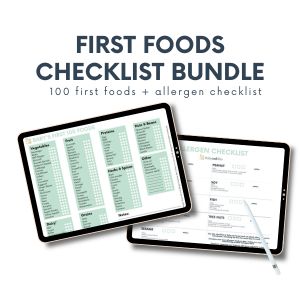
Track your baby's journey through starting solids! Get my 100 First Foods Checklist and Allergen Checklist Bundle today!
FAQ
Bananas are not a common choking hazard, however, if they are too firm, they can become a choking risk. Avoid offering in round shape, and offer ore ripe bananas that are a soft texture. Dried bananas and banana chips are a choking risk and should not be given to babies.
Bananas are not a common allergen. They can cause a reaction in people with Oral Allergy Syndrome and could also trigger a reaction in babies with FPIES (Food Protein-Induced Enterocolitis Syndrome).
Bananas on the greener or bright yellow side are higher in resistant starch, which is not digested by the body and can cause discomfort or constipation if your little one eats too much, especially when first starting solids. As bananas ripen, the resistant starch decreases and natural sugar increases, which could have the opposite effect of increasing speed of digestion. However, every child is different. If bananas seem to be causing constipation, reduce the amount eaten at one time, or opt for riper bananas with more brown on the peel.
Depending on baby's eating skills and your comfort level, you can offer whole ripe (soft) bananas as early as 12-18 months, or closer to 24 months if you prefer. Baby should show that he can consistently chew food well and doesn't overstuff his mouth.
While bananas are nutrient rich, they are also higher in sugar and low in protein and fat - nutrients baby needs for proper growth. Always aim for balance - if too many bananas is causing your little one to not be hungry for other foods, it's a good idea to cut back. Also if baby shows signs of digestive discomfort or problems, reduce the amount of banana given at one time.
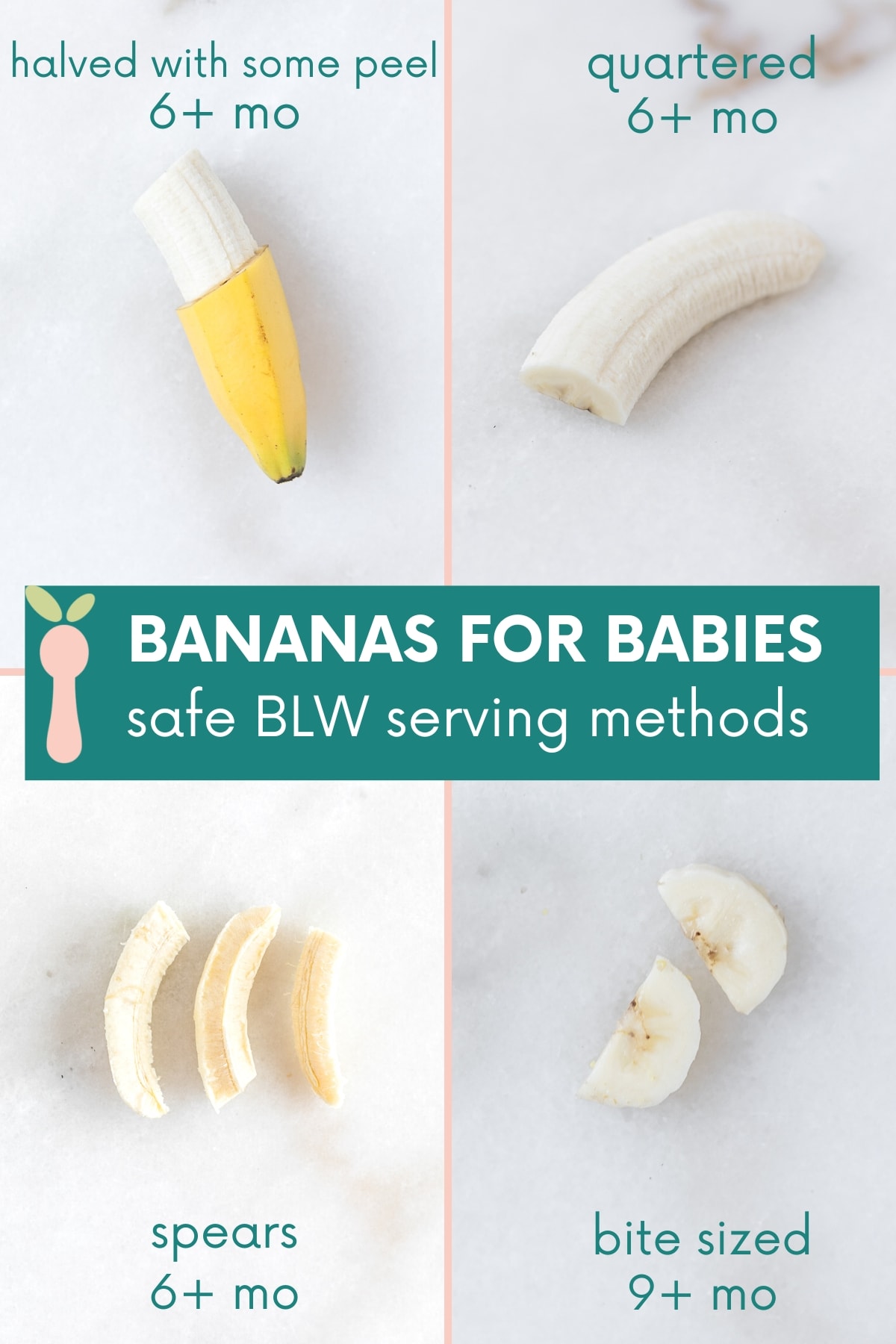

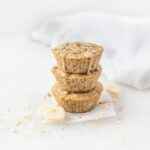
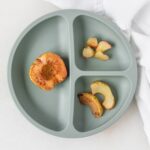
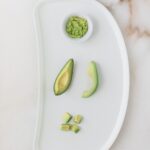
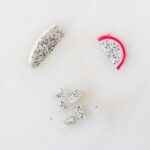

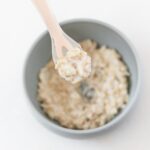

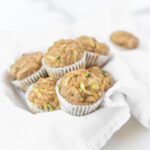

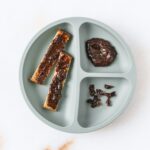
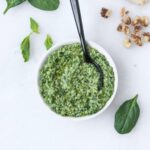
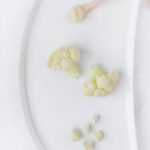
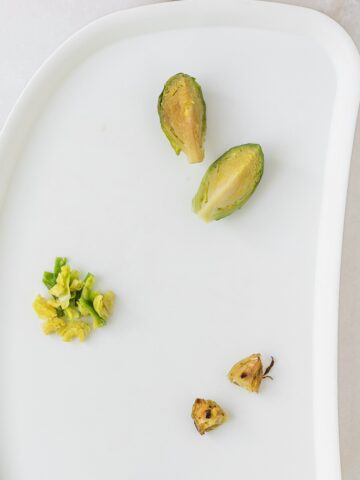
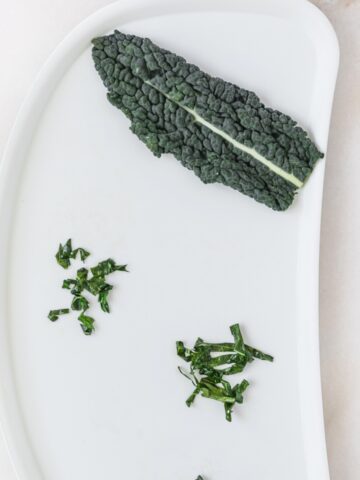
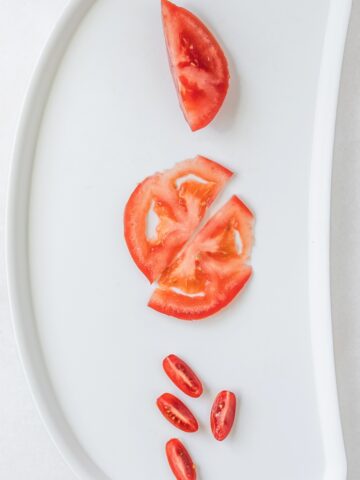
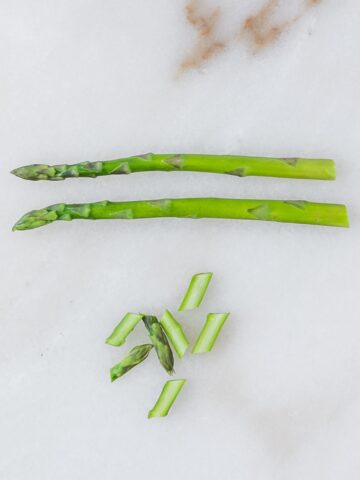
Leave a Reply